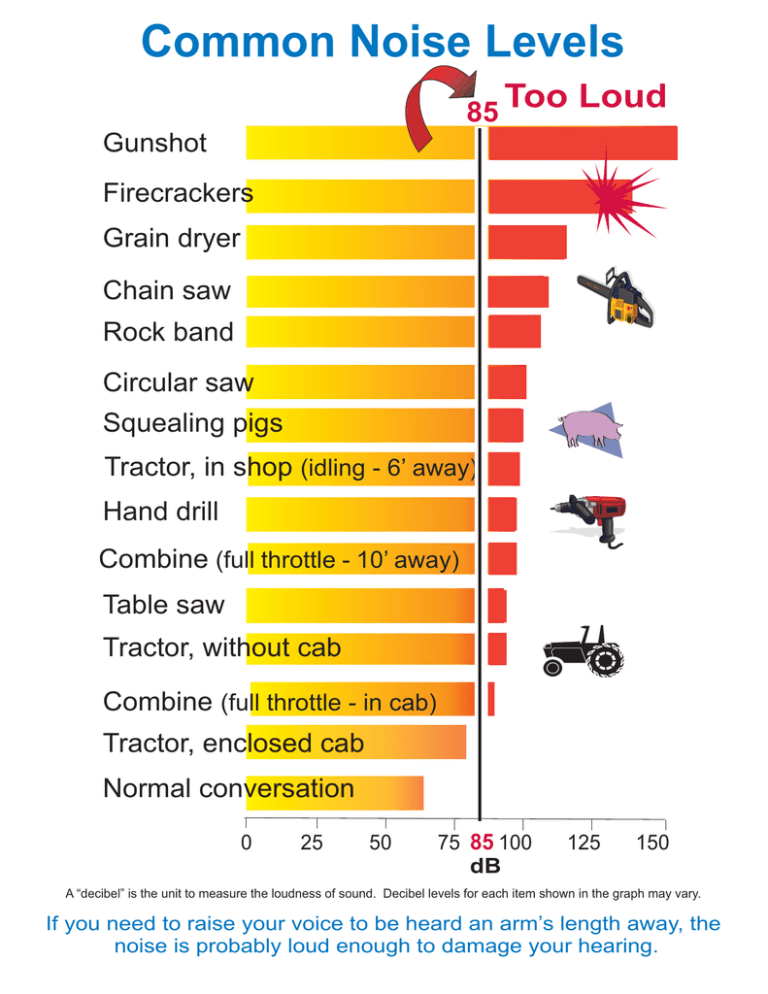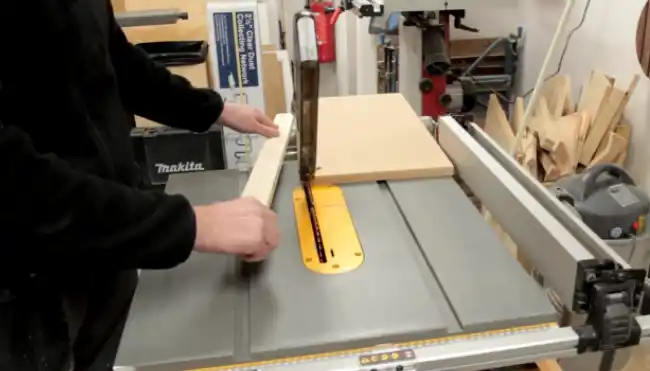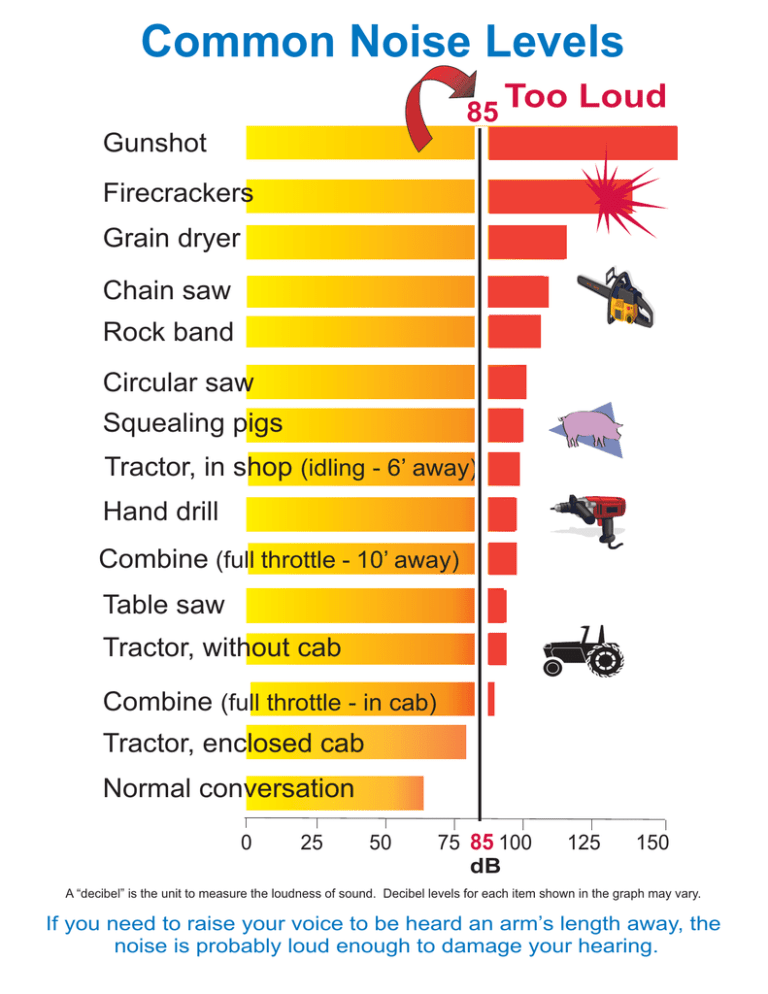Are you curious about how many decibels a table saw produces? Well, hold on tight because we’re about to dive into the noisy world of woodworking machinery! If you’ve ever witnessed a table saw in action, you know it’s not exactly the quietest tool in the shed. But just how loud is it? In this guide, we’ll explore the decibels emitted by a table saw and discuss ways to protect your ears while working with this powerful tool.
Let’s face it, table saws are beasts when it comes to making a racket. They roar, they rumble, and they make their presence known. But what exactly is a decibel and why does it matter? Decibels, my friend, are the unit of measurement for sound intensity, or in simple terms, how loud something is. When it comes to table saws, knowing the decibel level can help us understand the potential risks to our hearing and enable us to take necessary precautions.
Now, here’s the question you’ve been waiting for – how many decibels does a table saw produce? Well, the answer can vary depending on the specific model, type, and size of the saw. However, on average, table saws tend to produce noise levels ranging from 90 to 110 decibels. To put that into perspective, a regular conversation falls around 60 decibels, while a rock concert can reach up to 120 decibels. So, table saws definitely pack a punch when it comes to noise! So, let’s find out how we can protect our ears when using this mighty machine.

How Many Decibels is a Table Saw?
Table saws are a common tool used in woodworking and construction. They are known for their power and efficiency in cutting through various materials. However, one aspect of table saws that often gets overlooked is the amount of noise they produce. In this article, we will delve into the decibel levels produced by table saws and explore ways to reduce noise levels for a more comfortable working environment.
The Importance of Understanding Decibel Levels
Before we dive into the specific decibel levels of table saws, it’s essential to understand what decibels are and why they matter. Decibels (dB) are a unit of measurement used to quantify sound levels. The higher the decibel level, the louder the sound. Prolonged exposure to high decibel levels can have detrimental effects on our hearing, leading to hearing loss or other auditory issues over time. Therefore, it is crucial to be aware of the decibel levels produced by the tools we use, including table saws, and take appropriate measures to protect our hearing.
Understanding the Noise Levels of Table Saws
Table saws can vary significantly in terms of their noise output, depending on factors such as the type of motor, blade speed, and overall design. On average, a typical table saw produces noise levels ranging from 85 to 100 decibels, with some models reaching even higher levels. To put this into perspective, normal conversation typically occurs at around 60 decibels, while a jet engine at takeoff can reach approximately 120 decibels. Therefore, table saws can be considered relatively loud machines, and precautions should be taken to minimize exposure to excessive noise.
There are several reasons why table saws produce such high decibel levels. First, the powerful motors that drive the saw blades generate considerable noise. Additionally, the spinning blade itself creates a whirring sound as it cuts through the material. Finally, the vibrations and reverberations within the table saw contribute to the overall noise output. All of these factors combined result in the noise levels commonly associated with table saws.
It’s important to note that the decibel levels of table saws can vary depending on the specific model and brand. Some manufacturers prioritize noise reduction in their designs, resulting in quieter operation. Therefore, it is recommended to research and compare different table saw models to find one that meets your noise level requirements.
Effects of Prolonged Exposure to Table Saw Noise
Working with a table saw for extended periods without hearing protection can have adverse effects on your hearing. Prolonged exposure to high decibel levels can lead to temporary or permanent hearing loss, tinnitus (ringing in the ears), and other hearing-related issues. Additionally, the constant exposure to loud noise can cause stress, fatigue, and decreased concentration, affecting overall productivity and well-being. Taking steps to reduce noise levels while using a table saw is essential for maintaining the health and safety of both professional woodworkers and hobbyists.
One effective way to protect yourself from the harmful effects of table saw noise is to wear hearing protection. There are various options available, including earmuffs and earplugs, designed to block or reduce the noise entering your ears. Investing in high-quality hearing protection that meets the appropriate noise reduction standards is crucial for optimal safety and comfort during table saw usage. Additionally, implementing sound insulation techniques in your workspace, such as using acoustic panels or soundproofing the walls, can also help to reduce overall noise levels.
Now let’s explore some important factors to consider when selecting a table saw and how you can effectively reduce the noise levels associated with its usage.
Factors to Consider When Selecting a Table Saw
1. Motor Design and Power: Opt for a table saw with a motor known for its efficiency and low noise output. Look for features such as brushless motors or direct-drive systems, which tend to produce less noise compared to traditional motors.
2. Blade Quality and Design: Blades with more teeth tend to cut with less noise. Consider investing in high-quality blades specifically designed to reduce noise levels.
3. Table Saw Structure: Look for table saws with sturdy construction and sound-dampening features. A well-built table saw with vibration-reducing components can minimize noise and create a quieter working environment.
Tips for Reducing Table Saw Noise
1. Soundproof Your Workshop: Consider implementing soundproofing techniques in your workshop to reduce overall noise levels. This can include using sound-absorbing materials on walls and ceiling or creating a separate enclosed area for the table saw.
2. Choose the Right Location: Position your table saw away from walls or other reflective surfaces that can amplify noise. Opt for a location with minimal echoes and reverberations to create a quieter working environment.
3. Maintenance and Lubrication: Regularly maintaining and lubricating your table saw can help reduce noise caused by friction and vibration. Ensure all moving parts are well-oiled and functioning properly to minimize unnecessary noise.
Conclusion
Table saws can produce high decibel levels, ranging from 85 to 100 decibels or even higher. Prolonged exposure to such noise levels can lead to hearing loss and other auditory issues. It is crucial to take the necessary precautions to protect your hearing when using a table saw. Wearing appropriate hearing protection and implementing soundproofing techniques in your workshop can significantly reduce noise levels and create a safer and more comfortable working environment. Remember, investing in your hearing health is always a sound decision!
Key Takeaways: How Many Decibels is a Table Saw?
When it comes to table saws, the amount of noise they produce is measured in decibels (dB).
- Average table saws can generate around 85 dB of noise, which is equivalent to the sound of heavy traffic.
- Some table saws may produce up to 100 dB or more, which is comparable to a running chainsaw.
- Exposure to high decibel levels can cause hearing damage over time, so it’s important to wear hearing protection.
- Using a table saw with lower noise levels or adding sound insulation can help reduce the overall noise in your workshop.
- Always ensure proper safety measures and follow manufacturer’s guidelines when operating a table saw.
Frequently Asked Questions
Welcome to our FAQ section where we will be answering some commonly asked questions about the decibel levels of table saws. We understand that safety and noise concerns are important when it comes to using power tools, so we’re here to provide you with the information you need. Read on to find out more!
1. How loud is a table saw?
A table saw can be quite loud, typically ranging from 85 to 100 decibels. The exact noise level will depend on factors such as the specific model and brand of the table saw, as well as the materials being cut. Table saws generate noise due to the spinning blade and the motor powering it. It’s important to take proper precautions, such as wearing hearing protection, to protect your ears from potential damage caused by prolonged exposure to high decibel levels.
It’s also worth mentioning that some newer models of table saws are designed to be quieter than traditional ones. These may use noise-reducing technologies or insulation to dampen vibrations and minimize noise levels. If noise is a major concern for you, it’s worth looking into these quieter table saw options.
2. Can I lower the noise level of my table saw?
There are several steps you can take to lower the noise level of your table saw. One option is to invest in a blade specifically designed to reduce noise. These blades often have special tooth geometry or noise-reducing coatings that help dampen the sound produced during cutting.
Another way to lower the noise is by using a dampening system, such as a rubber or foam mat placed underneath the table saw. This can help absorb vibrations and reduce the overall noise level. Additionally, you can explore using a noise enclosure or setting up your table saw in a dedicated space with soundproofing materials to further minimize noise.
3. Are there any safety guidelines regarding table saw noise?
While there may not be specific regulations or guidelines solely focused on table saw noise, it’s important to prioritize your safety and protect your hearing. Occupational Safety and Health Administration (OSHA) guidelines recommend that workers exposed to noise levels higher than 85 decibels should wear hearing protection. Considering that table saw noise can often reach this level or even higher, it’s crucial to wear earmuffs or earplugs when operating a table saw.
It’s also a good idea to take regular breaks to give your ears a rest, especially if you are working in an environment with continuous table saw noise. By following these safety measures, you can help prevent potential hearing damage and keep yourself safe while using a table saw.
4. Can ear protection completely eliminate the noise from a table saw?
Noise-canceling earmuffs or earplugs can significantly reduce the noise level from a table saw, but they cannot completely eliminate it. While wearing hearing protection, you will still be able to hear the sound of the saw, but at a safer and more tolerable level. It’s important to choose proper hearing protection that has a high noise reduction rating (NRR) to effectively protect your ears.
It’s worth noting that even with hearing protection, it’s recommended to limit your exposure to loud noise. Prolonged exposure to high decibel levels, even with hearing protection, can still have long-term effects on your hearing. Taking breaks, minimizing the time spent near the table saw, and following recommended safety guidelines are essential for protecting your hearing health.
5. Are there any quiet alternatives to table saws?
Yes, there are quieter alternatives to traditional table saws available on the market. One such alternative is a track saw, which operates using a plunge-cutting mechanism and a guide rail system. Track saws are generally quieter than table saws because they have enclosed blades and utilize smoother cutting techniques.
Another option is a cabinet saw, which is known for its sturdy build and effective dust collection system. These saws often come with additional insulation, making them quieter compared to other types of table saws. If reducing noise is a top priority for you, these quieter alternatives may be worth considering.

Summary
Table saws can be really noisy, producing up to 110 decibels of sound. That’s as loud as a rock concert! It’s important to protect our ears by wearing earplugs or earmuffs when using a table saw. Understanding decibel levels and taking precautions can help us stay safe while working with power tools.
